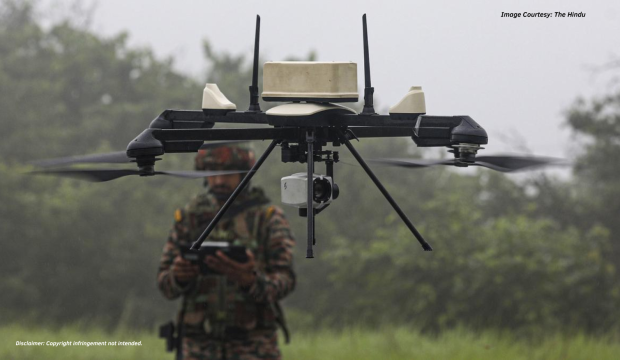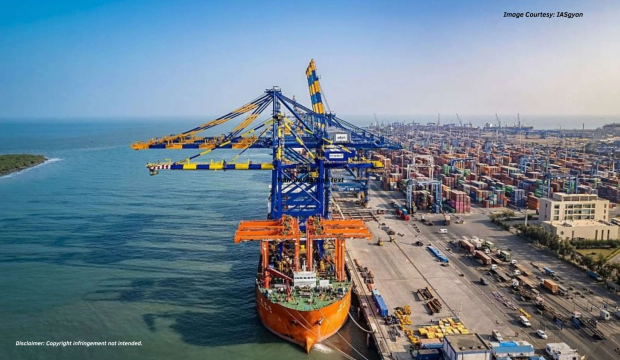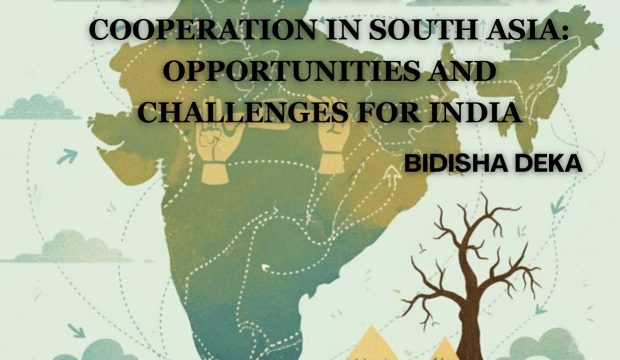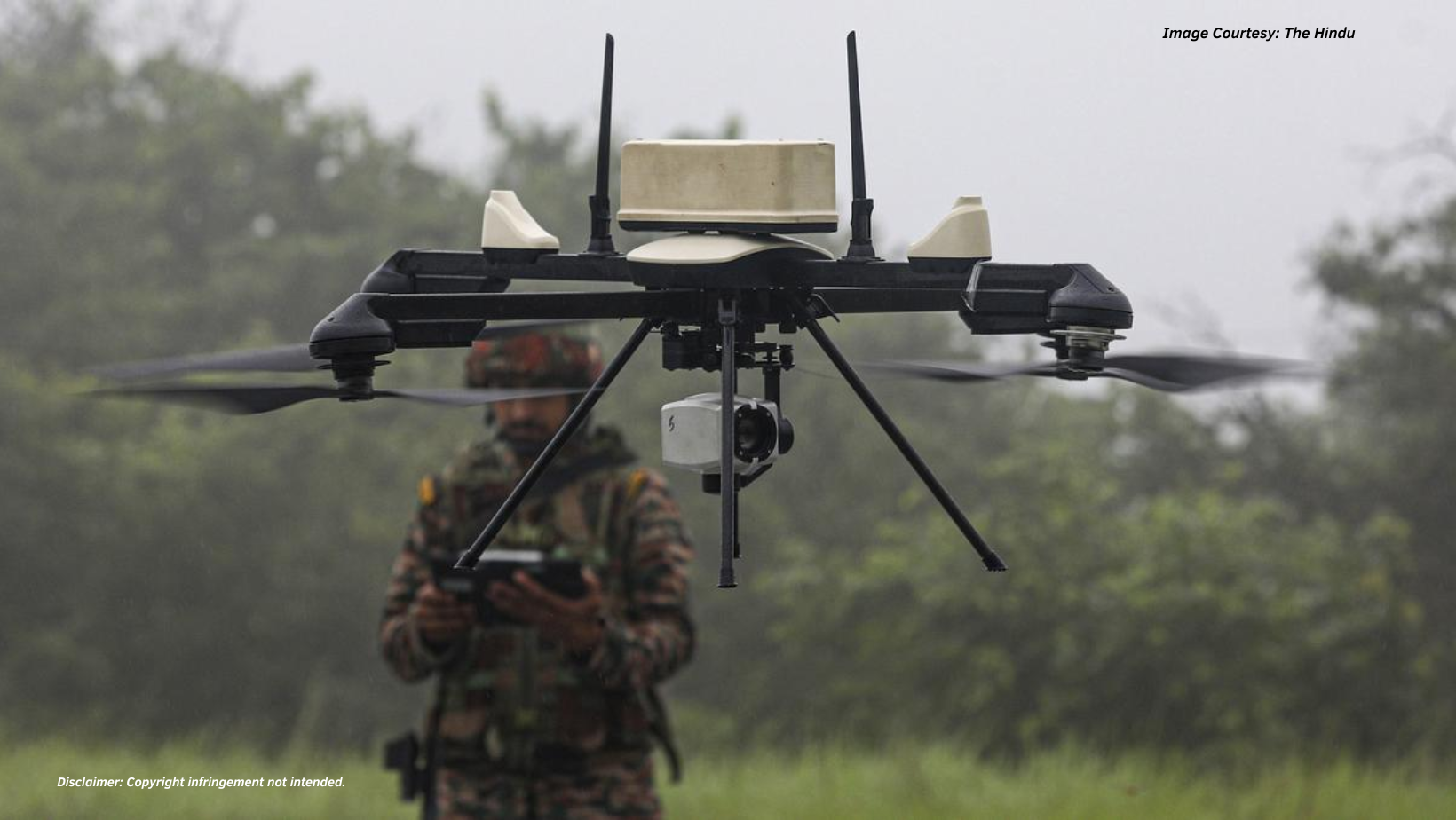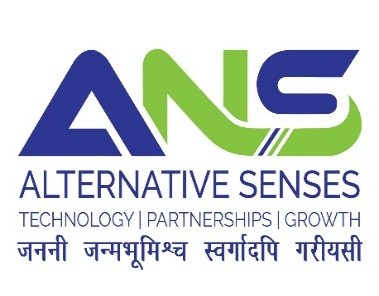Introduction
In East Africa, geopolitics is becoming increasingly complex with emerging interests and ideals of foreign nations, non-state actors and private players. The Chinese footprints stretch back to the early 15th century when sailor Zheng He made expeditionary trips to the continent’s eastern shores between 1413-19.[1] In contemporary times, formal ties were forged in 1911.[2] Shortly after the Civil War ended in China, Africa and in particular East Africa started emerging as an important segment within Chinese foreign policy[3]. Throughout the Cold War, Beijing supported a couple of African resistance movements including Zambia, with Chinese ambassadors and foreign ministers paying a visit to the continent regularly, barring only 1950[4].
Marxist prerequisites shaped Beijing’s financial ties with East Africans until the 1970s.[5] The Chinese ruling class saw trade relations across East Africa as a way to help the nation reach its goals for growth.[6] In return, the Chinese grew as one of the largest commercial partners, and prominent foreign investors in the region in the last few years. At present, China is restructuring the political and geographical landscape of the East African Community (EAC) through the Belt and Road Initiative (BRI). This is being achieved in two ways: first, by making significant investments in regional connectivity projects; and second, by advancing alternative development concepts and ideas that support a Chinese-centric order in the region.
The Chinese capitalising on the reduced influence of the United States and France, came up with their first base in Djibouti in 2016 which became operational in 2017, Beijing is planning to come up with another base in the country. Beijing has carefully mapped out its approach with these countries to secure its interests.
Beijing has engaged with the East African countries more and more on the economic front. It has invested in several infrastructure projects along the Belt and Road Initiative (BRI), some of the major projects are- the Addis Ababa Djibouti Railway project, the Djibouti port extension, the Mombasa-Nairobi railway project etc. This has in turn helped China to become the largest trading partner of the East African Nations.
The Chinese have also strengthened their bilateral relations with these countries by engaging with them in several key diplomatic areas and effectively using military diplomacy to bolster the ties. They have been providing military training and capacity building to Kenya, Tanzania Uganda and Ethiopia. Their Joint Escort Task force, especially the 45th Escort Task Force docked in various African countries, especially East African countries [7]which demonstrates the PLAN’s ability to dock, replenish and carry out exercises with these countries.

Strategic Importance of East Africa
East Africa is strategically located along the major maritime trade routes, making its importance multifaceted. Its proximity to Western IOR lies at the junction of multiple routes connecting Africa to the Middle East, Europe, South and South-East Asia and further to South America. Abundant in natural resources like oil, gas, minerals, fertile land (for agriculture) and rare earth elements[8], the region has grabbed the attention of many Western nations like the US, UK, France, Russia and Chinese for their respective energy, semiconductor and other emerging industries. Needless to say, unlike the Western powers, the Chinese have navigated the region with utmost caution and sensitivity. They have ensured to disguise their intentions under the garb of economic growth and infrastructure projects.
With piracy and illicit activities surging significantly in Eastern Africa, especially Houthi attacks, as a spin-off from the Israel-Hamas conflict[9], many nations and regional bodies, like ASEAN, Japan, Australia, and India have stressed the need of a stable East African region for a “free and open Indo-Pacific” to ensure safe and secure shipping lines and submarine cables. [10]The ports of EAC facilitate development, and link landlocked states to overseas markets by stimulating business activity, creating capital, and offering employment possibilities. They promote regional cohesiveness, collaboration, and prosperity. The region is a hub of cheap and unskilled labour, in fact, the largest contributor of blue-collar jobs both for foreign entities operating in the regions as well as for Gulf nations.
Strategically, the region’s climate too plays a significant role in shaping the global geopolitics along with global weather patterns. East Africa’s marshes and forest cover contribute largely towards carbon sequestration. Being an epicentre of biodiversity, any imbalance in the ecosystems can cause global ecological instability, particularly the structural integrity of interrelated habitats. Further, unforeseen droughts and flooding have also been a major reason for conflicts in the region and exacerbating forced displacements. Additionally, the rise in any epidemics or pandemics from the region can potentially alter the course of international healthcare and supply chains.
Importance of the Mozambique Channel From The Chinese Perspective
The importance of the Mozambique channel decreased when the Suez Canal was opened in the year 1869, terrorism and instability in the Middle East and North Africa[11] have often compelled the nations to reroute their shipping and use the Mozambique channel even though it significantly increased the cost of the goods and services as the route is relatively longer thus increasing the cost of transportation.
The Chinese also eye the region due to its immense natural resources and strategic location in the Indian Ocean Region and have been making attempts to bring the island nations of Madagascar and Comoros under its sphere of influence.[12] They intend to establish strong control over SLOCs and transform into a strong blue-water navy surpassing the United States. They aim to achieve through various policies and flagship projects under the BRI and String of Pearls strategy to intrude into these island nations which have weak economies and relatively unstable governments. They intend to trap these nations through the debts and take over the vital port and energy infrastructure.
The Chinese have been employing various techniques to develop relations with these countries with more focus on soft power unlike their Western rivals and are taking measures to leave no footprint in the region to avoid any uprising against the Chinese presence or becoming a target of the terrorist organisation operating in the region. Therefore, the Chinese are moving carefully not to portray their policies as oppressive.
The governments in the area have neglected to equip their fleets, leaving Mozambique with just one patrol boat and Madagascar with a small number of outdated, potentially dangerous vessels. The US contributed one of its cutting-edge patrol boats, but it isn’t used much because the expensive maintenance requirements made the countries with weak economies hesitant to employ these vessels.[13] This created a vacuum in the region which was filled by the American Navy and lately by the Indian Navy and PLAN.
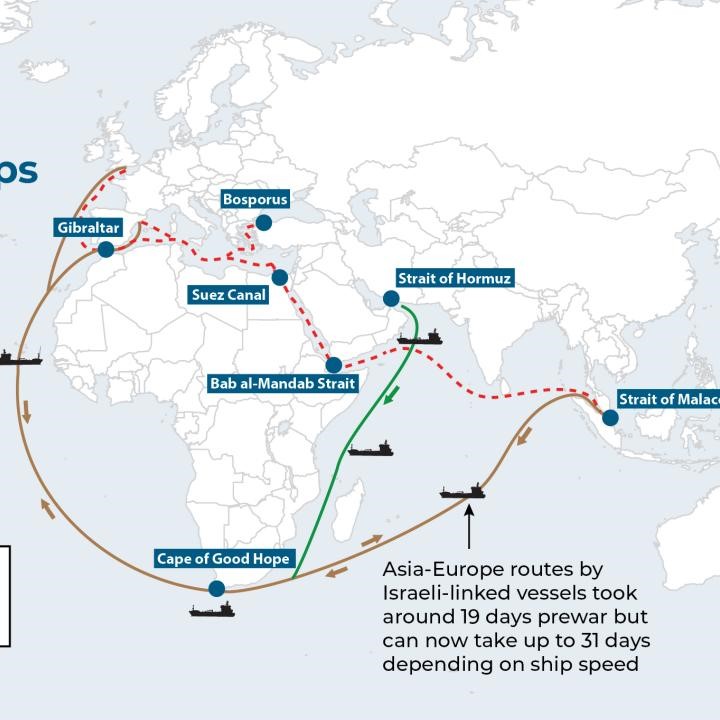
Chinese Inroads in East Africa
The People’s Republic of China (PRC) has been Africa’s largest commercial ally and an essential actor in its economic growth; widely prevalent through its footprints in Eastern African Countries which include- Comoros, Djibouti, Ethiopia, Kenya, Madagascar, Mauritius, Mozambique, Seychelles, Somalia, South Sudan, Tanzania, Uganda.
The Chinese have employed a mix of soft power, diplomacy and military diplomacy to build effective bilateral ties in East Africa.
Firstly, they have invested heavily in infrastructure projects especially to develop ports and build a vast railway network to further support its ambitions of the Belt and Road Initiative. Some of the examples include the Djibouti Port expansion, the port of Mombasa in Kenya, Lamu Port in Kenya and the Bagamoyo Port in Tanzania. They are also developing the Mombasa-Nairobi railway line. [14]
Secondly, they have increased cultural ties through the setting up of Confucius institutes and encouraging cultural exchanges. [15]
Thirdly, the Chinese Communist Party (CCP) has very liberally extended the lines of credit to the East African nations which has raised alarms among the countries themselves about the debt trap. [16]
Fourthly, Beijing has strategically built a base in Djibouti and reports suggest that they are coming up with a second base in Djibouti. They have increased the number of Peacekeepers in South Sudan and other African conflict zones which has helped them to build a positive image of themselves.[17] They have also been training the armies of various nations of the region and helping them to develop a strong force to counter the threats of piracy and terrorism. [18]
In addition to the policies, there has been a significant influx of the Chinese population into the region.[19] These immigrants arrive in the country as labourers but settle down in the countries and transition to small-time business owners. This trend can be noticed in Madagascar as many Chinese immigrants who arrived in the country as labourers but are now running small businesses especially restaurants and also own a major share in vanilla farming.[20]
Drawbacks
By failing to manage and use joint maritime assets effectively, East African nations have overlooked the avenues to boost their revenues, generate opportunities, invest in emerging sectors, and feed an increasing population. Only within the Intergovernmental Authority on Development (IGAD) has maritime access to only half of the countries throughout the western IOR, a significant strategic region that transmits economic activities worth billions of dollars. Considering that nearly ninety per cent of East Africa’s shipments and imports are heavily dependent on the sea routes, the region has yet to become an active participant in the global maritime economy. East African nations own less than one per cent of all maritime shipping assets. The Shippers Council of East Africa has listed several issues, including limited docking capabilities, transportation system, infra, overcrowded harbours, high operational charges, container pillaging, and arbitrary fines.
Recommendations
India has made significant strides in modernising its navy and expanding the number of ships and weaponry it possesses. Due to its strategic location and the recent launch of INS Jatayu, India has the potential to become a major security provider in the area and build goodwill by actively participating in HADR and anti-piracy operations.
Aside from this, we should work to challenge China’s Belt and Road Initiative and develop the region’s infrastructure by offering more lucrative terms to the countries. Also, India should emerge as a key partner in infrastructure development projects especially the ones related to ports and railways.
In order to safeguard its interests in the enormous natural gas deposits, including those in Madagascar’s offshore Morondava basin, the government must effectively collaborate with the East African nations.
The use of military diplomacy and aiding the nations in building well-trained militaries could help develop relations with East African nations as India does not currently have much military engagement with them. This will help create stability in the region, which will foster future economic projects that will lead to economic development in these nations.
Conclusion
Recent developments between Israel and Hamas have restored the Mozambique Channel’s significance while also elevating the stature of East African countries. China has been playing a significant role in the region, which has its own set of difficulties. Since establishing its base in Djibouti, China has expanded its interactions with Madagascar, Comoros, and other East African countries, forging a stronghold in the region and raising India’s threat level in multiple scenarios. A major demographic shift resulting in social imbalances has occurred in several countries due to the huge influx of the Chinese Han population.
China is placing a strong emphasis on enhancing its engagement with African states in order to safeguard its interests in the abundant natural riches that the continent has to offer. This has been carefully noted by the Chinese escort forces, particularly the 45th Escort force[21] docked in multiple African nations which highlights an increased level of military level engagements with the African nations and the Chinese military.
India has strengthened its Navy with significant positive actions and taken great strides towards its modernisation, but it still lacks the policy framework to become a blue-water force. The government should be aware of the region’s enormous strategic and natural resource potential. As a result, we must reform our policies and increase our presence in East Africa through active cooperation on various issues with the African countries and address various issues the region faces.
DISCLAIMER
The paper is author’s individual scholastic articulation and does not necessarily reflect the views of CENJOWS. The author certifies that the article is original in content, unpublished and it has not been submitted for publication/ web upload elsewhere and that the facts and figures quoted are duly referenced, as needed and are believed to be correct.
References
- Human Sciences Research Council Press. “Zheng He’s Voyages to Africa in the 15th Century: The Maritime Silk and Porcelain Road.” Accessed July 25, 2024. https://hsrcpress.ac.za/product/zheng-hes-voyages-to-africa-in-the-15th-century-the-maritime-silk-and-porcelain-road/
- Jinyuan, G “China and Africa: The Development of Relations over Many Centuries.” African Affairs 83, no. 331 (1984): 241–50. http://www.jstor.org/stable/721561.
- Chatham House. “China-Africa Relations.” January 2023. Accessed July 25, 2024. https://www.chathamhouse.org/2023/01/china-africa-relations
- Thompson, D. “China’s Soft Power in Africa: From the ‘Beijing Consensus’ to Health Diplomacy.” Jamestown Foundation, October 13, 2005. Accessed July 25, 2024. https://jamestown.org/program/chinas-soft-power-in-africa-from-the-beijing-consensus-to-health-diplomacy/.
- Cissé, D., et al. “China’s Influence on Politics, Societies, and Economies in Africa.” *Megatrends Afrika Working Paper*, no. 5. 2023. Accessed July 26, 2024. https://www.megatrends-afrika.de/assets/afrika/publications/MTA_working_paper/MTA_WP5_Ciss%C3%A9_et_al_China_s_Influence_on_Politics_Societies_and_Economies_in_Africa_Final_Document_for_Publication.pdf
- Uddhammar, E. Observer Research Foundation. “China in Africa: The Role of Trade, Investments, and Loans Amidst Shifting Geopolitical Ambitions.” Accessed July 26, 2024. https://www.orfonline.org/research/china-in-africa.
- “Chinese Naval Task Force Visits Mozambique.” Military Africa. April 2024. https://www.military.africa/2024/04/chinese-naval-task-force-visits-mozambique/.
- “China’s Scramble for Africa’s Rare Earth Elements.” Observer Research Foundation. Accessed July 27, 2024. https://www.orfonline.org/expert-speak/chinas-scramble-for-africas-rare-earth-elements.
- Its importance grew all the way more with the onset of the October 7th attacks conducted by Hamas on Israeli soil. This led to an detrimental effect on the shipping routes through the Suez Canal as the Houthi rebels shut down the shipping lines with drone attacks and rocket attacks in support of Hamas. This compelled the shipping companies to go back to their navigation charts for course correction. They were compelled to take the longer route of the Mozambique channel and avoid the Red Sea for safety reasons.
- “East Africa Outages: Fears Over Africa’s Internet Vulnerabilities.” Semafor. May 14, 2024. https://www.semafor.com/article/05/14/2024/east-africa-outages-fears-africas-internet-vulnerabilities.
- Brown, J. “Europe Scrambles for New Gas Supplies Amid Ukraine War; Stakes Are High for Security in Cabo Delgado, the Mozambique Channel.” EurAsian Times, September, 2023. Accessed July 15, 2024. https://www.eurasiantimes.com/europe-scrambles-for-new-gas-supplies-amid-ukraine-war-stakes-are-high-for-security-in-cabo-delgado-the-mozambique-channel/.
- Allard, L. “China Is Testing Its Freeriding Strategy in the Red Sea.” Atlantic Council, February 2024. Accessed July 15, 2024. https://www.atlanticcouncil.org/blogs/new-atlanticist/china-is-testing-its-freeriding-strategy-in-the-red-sea/
- “U.S. Gives Patrol Boat to Mozambique to Improve Maritime Security.” 2022. The Maritime Executive. December 9, 2022. https://maritime-executive.com/article/u-s-gives-patrol-boat-to-mozambique-to-improve-maritime-security.
- Kelley, Michael. “China’s Belt and Road Initiative in Africa.” Military Review 103, no. 3 (May-June 2023). https://www.armyupress.army.mil/Journals/Military-Review/English-Edition-Archives/May-June-2023/Chinas-Belt/.
- Nairobi News. “The Growing Allure of Chinese Language in Learning Institutions.” Nairobi News. Accessed July 27, 2024. https://nairobinews.nation.africa/the-growing-allure-of-chinese-language-in-learning-institutions/.
- Kantchev, Georgi. “China’s Debt Diplomacy: The Risks and Realities of Beijing’s Financial Influence in Developing Countries.” Associated Press. March 20, 2024. https://apnews.com/article/china-debt-banking-loans-financial-developing-countries-collapse-8df6f9fac3e1e758d0e6d8d5dfbd3ed6.
- “Beijing’s Blue Helmets: What to Make of China’s Role in UN Peacekeeping in Africa.” Modern War Institute. Accessed July 27, 2024. https://mwi.westpoint.edu/beijings-blue-helmets-what-to-make-of-chinas-role-in-un-peacekeeping-in-africa/.
- Cheng, Li. “Chinese Professional Military Education in Africa: A Key to Influence and Strategy.” United States Institute of Peace. July 2023. https://www.usip.org/publications/2023/07/chinese-professional-military-education-africa-key-influence-and-strategy.
- “Madagascar Fights for Sovereignty Amid Chinese ‘Debt Trap’ Diplomacy.” The Economic Times, October 14, 2021. Accessed July 15, 2024. https://economictimes.indiatimes.com/news/international/world-news/madagascar-fights-for-sovereignty-amid-chinese-debt-trap-diplomacy/articleshow/87036731.cms?from=mdr. .
- Madagascar’s Chinese Vanilla.” Al Jazeera, April 8, 2015. Accessed July 15, 2024. https://www.aljazeera.com/program/people-power/2015/4/8/madagascars-chinese-vanilla#:~:text=A%20recent%20influx%20of%20Chinese,been%20flowing%20into%20foreign%20hands.
- “News on Escort Missions.” China Military Online. Accessed July 15, 2024. http://eng.chinamil.com.cn/CHINA_209163/MOOTW/EscortMissions_209168/News_209169/index.html.




